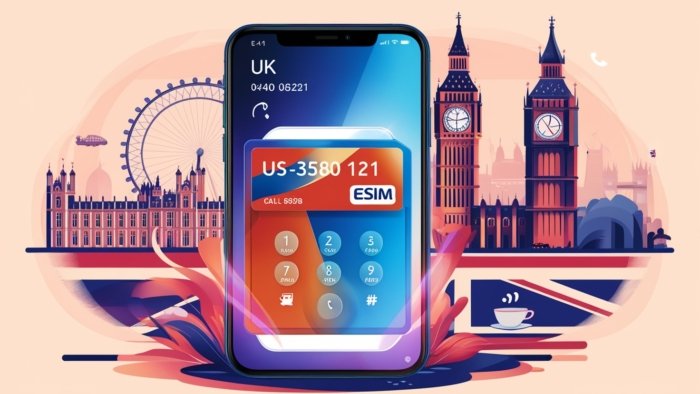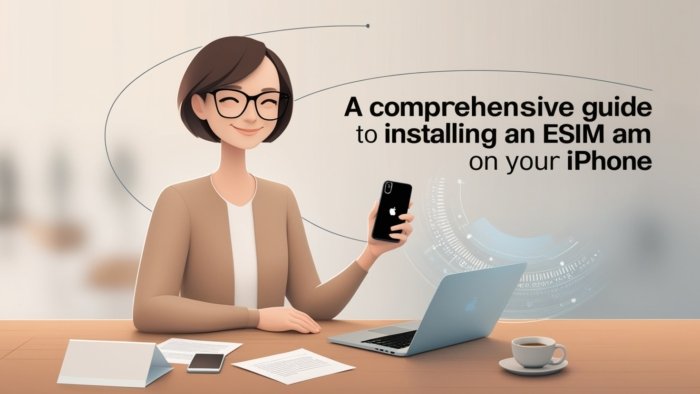What is an eSIM?
An embedded SIM, or eSIM, represents a significant advancement in mobile connectivity, offering a more efficient alternative to traditional SIM cards. Unlike standard SIM cards that exist as detachable plastic components, eSIMs are integrated directly into a device’s circuitry. This embedded design provides numerous advantages, such as increased space utilization within devices, enhanced durability, and the ability to be remotely reprogrammed. As mobile technology continues to evolve, eSIMs are becoming increasingly prevalent in smartphones, tablets, smartwatches, and other connected devices.
The transition from standard SIM cards to eSIM technology is rooted in the evolving demands of consumers and the telecommunications industry. Historical context reveals that traditional SIM cards, first introduced in the early 1990s, were designed to securely store subscriber information and authenticate users on cellular networks. However, the need for more versatile, agile solutions prompted the development of eSIM technology. The first commercial eSIMs were introduced in 2016, and since then, they have changed the landscape of mobile communications.
One of the main benefits of eSIMs lies in their space-saving potential. By eliminating the need for a physical SIM card slot, manufacturers can create slimmer, more compact devices. Additionally, eSIMs are more durable than their predecessors, as they are less susceptible to physical damage, like bending or breaking. Moreover, with the capability to switch carriers or plans without the need for physically swapping cards, eSIMs provide unmatched flexibility for users. Consumers can manage multiple carrier subscriptions or plans within a single device, optimizing their mobile experience and ensuring sustained connectivity. As the technology continues to advance, eSIMs are poised to play a central role in the future of mobile communications.
Benefits of Using eSIMs
eSIMs, or embedded SIMs, offer a range of advantages that surpass those associated with traditional SIM cards. One of the most significant benefits is the convenience they provide in switching carriers. With an eSIM, users can change their mobile service provider without the need to physically swap out SIM cards. This not only saves time but also makes it easier to take advantage of better plans or network coverage.
Moreover, eSIMs allow for the storage of multiple profiles on a single device. This means that users can manage various phone numbers or plans without juggling multiple physical SIM cards. This feature is particularly beneficial for international travelers who may require a local plan temporarily. By utilizing an eSIM, travelers can switch to a local carrier seamlessly, ensuring they remain connected without incurring exorbitant roaming charges.
Enhancing connectivity options is another notable advantage of eSIM technology. With the ability to connect to different networks within a single device, users experience better flexibility and can select the best option based on availability and quality. This versatility is especially crucial in areas where network coverage can fluctuate, providing users with a more reliable service wherever they go.
Device security is another aspect where eSIMs can make a positive impact. Unlike traditional SIM cards, which can be easily removed, an eSIM is embedded in the device, making it more difficult for unauthorized users to access. This adds a layer of protection against theft and fraud, as the eSIM cannot be easily extracted and used in a different device. Additionally, the reduction of physical components in mobile devices lessens wear and tear, contributing to the overall longevity of smartphones.
How to Set Up and Manage eSIMs on Your Device
Setting up and managing eSIMs on your smartphone has become increasingly convenient, with many devices now supporting this feature. The process typically varies slightly depending on the device and the provider, but here we will outline a general guide to assist you in activating your eSIM successfully.
First, to initiate the eSIM setup process, ensure that your device is compatible and updated to the latest software version. Begin by navigating to the settings menu where you will find options for mobile networks or cellular data. Look for an option labeled ‘Add Mobile Plan’ or ‘Add eSIM’ and select it. At this stage, you should have received a QR code from your mobile carrier that is essential to proceed.
Next, tap on the option to ‘Scan QR Code.’ Use your device’s camera to capture the QR code provided by your carrier. Ensure the code is centered within the viewfinder to allow for accurate scanning. After successfully scanning the QR code, follow the on-screen instructions, which usually include confirming the plan details and setting a default line if you have multiple profiles.
Once your eSIM is activated, you can manage it directly from your device’s settings. The mobile plan section will allow you to view details, switch between plans, and even remove an eSIM if necessary. To troubleshoot common issues, ensure that your phone is connected to a stable internet network. If your eSIM fails to activate, double-check that the QR code matches the provided information and that your device’s settings allow mobile data to function properly. Sometimes, simply restarting the device can resolve connectivity problems.
In conclusion, setting up an eSIM on your phone can streamline your mobile experience, reducing the need for physical SIM cards. By following these steps, you can effectively manage your eSIM profiles and enjoy seamless connectivity.
The Future of eSIM Technology
The evolution of eSIM technology marks a significant milestone in the mobile telecommunications industry. With the inherent flexibility and convenience that eSIMs offer, their potential impact can be observed across several dimensions including device design, connectivity standards, and market competition. Unlike traditional SIM cards, eSIMs allow for multiple profiles to be stored on a single chip, which significantly influences how devices are designed. Manufacturers are progressively moving towards slimmer and more compact devices, as the need for physical SIM card slots diminishes. This can lead to either enhanced features or more robust designs, paving the way for innovative mobile technology.
From a connectivity perspective, eSIM technology fosters greater global roaming options and simplified carrier switching. Users are empowered to switch between different mobile networks seamlessly, which could enhance customer satisfaction and compel providers to improve service quality and pricing. In turn, this shift is likely to intensify market competition among telecommunications companies, encouraging them to innovate and differentiate their offerings in a bid to attract and retain subscribers.
Furthermore, the future of eSIMs extends beyond traditional smartphone applications. As the Internet of Things (IoT) continues to expand, eSIM technology stands poised to play a pivotal role in connecting a myriad of devices—from wearables to smart home appliances. The ability to manage multiple device connections remotely through a single eSIM is expected to streamline user experience significantly. With advancements in eSIM technology, predictions point towards an increasingly interconnected world, where consumers will experience seamless connectivity across multiple devices without the typical complexities of managing physical SIM cards. Overall, the landscape of mobile technology is set for transformation, driven by the adoption of eSIMs and their endless possibilities.




 eSIM technology represents a significant evolution in mobile connectivity, shifting from traditional physical SIM cards to an integrated, programmable alternative. In essence, an eSIM (embedded SIM) is a digital SIM that is embedded directly into the device, allowing users to activate cellular plans without having to insert a physical card. This innovation makes it possible to download multiple carrier profiles on one device, providing flexibility that was previously unattainable.
eSIM technology represents a significant evolution in mobile connectivity, shifting from traditional physical SIM cards to an integrated, programmable alternative. In essence, an eSIM (embedded SIM) is a digital SIM that is embedded directly into the device, allowing users to activate cellular plans without having to insert a physical card. This innovation makes it possible to download multiple carrier profiles on one device, providing flexibility that was previously unattainable.